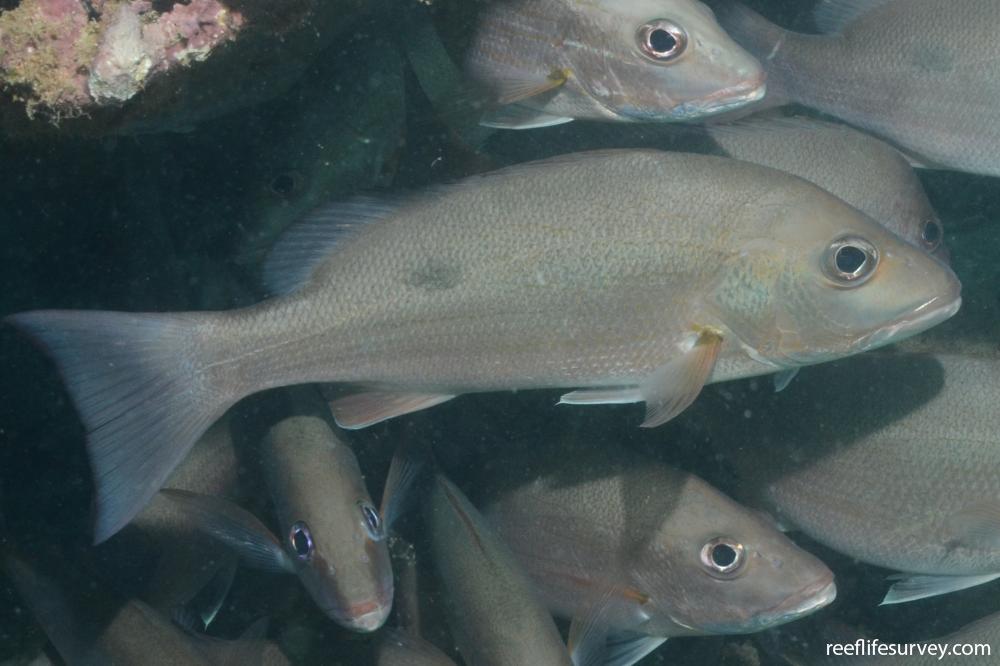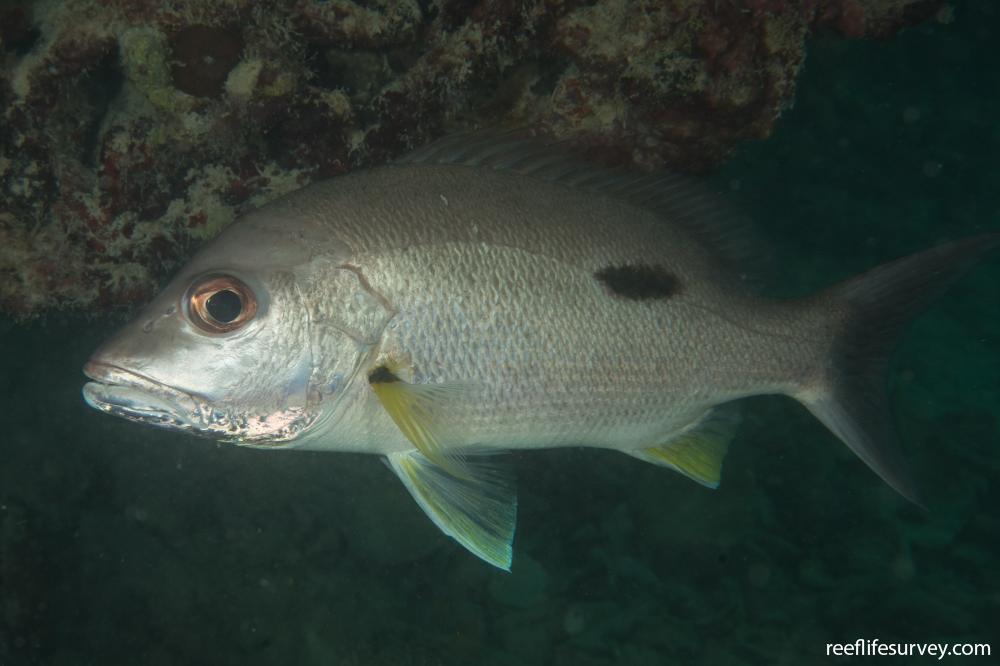Lutjanus russellii
Moses Snapper | Fingermark Bream | Moses' Perch | Moses' Seaperch | Russell's One Spot Snapper | Russell's Seaperch | Russell's SnapperSimilar Species
Same Genus
Distribution
Temperate Australasia, Tropical Indo-Pacific
Description
Pink/grey body, often with yellow pectoral, ventral and anal fins, dorsal and tail fins dark maroon/black, small black spot on pectoral fin base, large black spot usually present towards rear of body over lateral line. Juveniles pale with brown stripes, one of which from snout, through eye to base of soft dorsal fin. Similar L. monostigma (Onespot Snapper) has yellow tail. Adults school over reef, juveniles in estuaries and mangroves.
Information
Max Size: 50 cm
Sea Temperature Range: 17.9-31.1°C
Depth: 3-80 m
Habitat Generalization Index: 6.58
Also referred to as the SGI (Species Generalisation Index), this describes the habitat niche breadth of the species. Species with values less than 15 are found in a relatively narrow range of reef habitat types (specialists), while those over 25 may be found on most hard substrates within their range (generalists). Learn more here.
Conservation and Rarity
IUCN Status: Not Evaluated
Occurrence: Infrequent (5.6% of sites)
Occurrence describes how often the species is found on surveys within its distribution. It is calculated as the % of reef sites surveyed by RLS divers across all the ecoregions in which the species has been observed
Abundance: Few (5 per transect)
Abundance is calculated as the average number of individuals recorded per RLS transect, where present.
Edit by: RD Stuart-Smith, GJ Edgar, AJ Green, IV Shaw. 2015. Tropical Marine Fishes of Australia. Reed New Holland











































